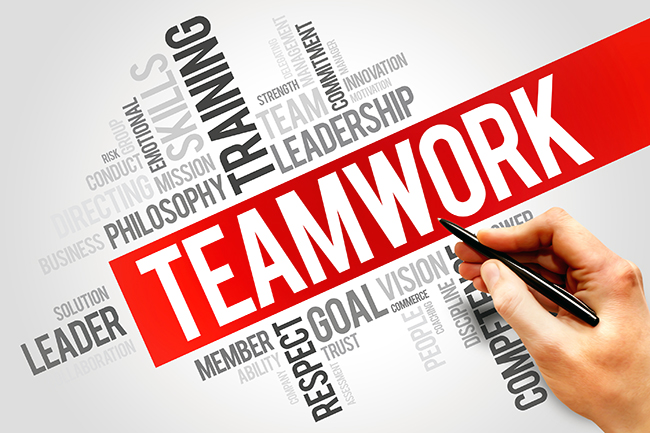Sometimes, leadership feels harder than it should be. Certain things need doing, your team is clear on the objective, and those action items still aren’t getting done. Even when they are, you can feel the lack of enthusiasm for the work. Sometimes it manifests as confusion or frustration, desperation or unhealthy competition. Sometimes, just a general sense of apathy.
You want to fix it, to motivate the team, but the more time and energy you invest, the more other people seem to want out of you. Why does leadership sometimes feel so hard, when other people make it look so easy?
The struggle and the sacrifice
Recently, one of my clients reached out with a similar issue. He said, “Trish, I feel like I have to please so many people, I don’t have time for myself … I know I need to take the time, but, I feel selfish for taking ‘me time’ when so many people need me…”
Sound familiar? Do you have times where you know you would benefit from a break, and you skip it, because the buck stops with you, and you don’t want to let someone else down? You want to set a good example, to be the sort of leader who is There For Your People when they need you. You want to understand them, for them to be excited about their job and happy to be on the team. So you go all out, be everything you can for them, without thinking of yourself.
Here’s the thing…
When we’re always committed to making other people happy, we will always be at the mercy of other people’s happiness … and this is something over which we have no control. We cannot make anyone else happy. Fortunately, that’s not our job!
Happiness is both a choice and a result, and we are not responsible for either of those factors in other people. Each person is responsible for their happiness. So what does Understanding and Being There for a team look like when the leader no longer factors in “Make Them Happy” as one of their metrics of success?
A different way to think about influence
Happy is a feeling, and feelings can change. I like to remind people, feelings are like gas — they happen and they pass. Value is something else entirely. When we’re committed to adding value to life, ours and others, our focus shifts from making something happen (a finite result) to being a complement to something (an ongoing benefit).
When we focus on adding value to ourselves for the benefit of others, we can be free to be the best version of ourselves. When we are being that person, we will naturally add value to others around us. When we are at our best, we are giving others the benefit of our optimum focus, determination and enthusiasm. By being the best version of ourselves, we become the example we want to be.
When we are more focused, we become more present, a better listener. When we’re not fully present, it’s easy to be distracted, to miss important things people are saying and being. Remember, the act of listening is something we do FOR someone, not TO them. People love to be around people they feel truly get them, and we can be that for someone else when we choose to listen for them, rather than to them. Purposeful listening is a tremendous way to establish trust, communicate understanding and build influence.
Making the shift
My client felt one of the obstacles keeping him from being his best was time management. So many distractions enticing him away from living and working in his strengths.
While tools — like a day planner, calendar or smartphone — can help overcome this kind of challenge, the real catalyst is our mind. This is true no matter what obstacles are keeping us from being our best. What we think, what we tell ourselves, what we make things mean … these are the things that allow us to become distracted, stressed out or frustrated.
When we transition from working so hard to make people happy to being fully present and purposefully listening in order to better understand what is keeping us from being the best version of ourselves, we are free to focus on being our best, leading to a greater capacity to add value to everyone around us.
That’s the first step in transitioning from striving for a finite result (happiness) to offering an ongoing benefit (value). Next time, we’ll unpack this idea a bit more by asking the question: “Is there a better way to earn my team’s trust?”

Creating an environment that encourages people to lead
In our most recent blogs, we looked at two different real-world customer service scenarios. In one story, both an employee and a manager fumbled a simple service opportunity that nearly cost them a long-time customer. In the next story, one employee chose...

A leader steps up and saves the deal
In our last blog, I shared a friend’s story of what he called “bewilderingly poor customer service,” that left him wondering why neither the employee nor the manager seemed to know how to fix the problem … or felt empowered to do so. Today’s story begins...

A customer service miscue leaves a lasting impression
In our last blog, we talked about the importance of investing in our team members personally, as well as professionally, and what that means for our organization. In this blog, I want to share a story about what can happen when leadership focuses on skills...

What Christmas means to me
This year, at Christmas, there are so many things tugging on our hearts. My husband, Bob’s, dad passed away earlier this year, and his mom was diagnosed with lung cancer. She will miss celebrating with us this year, because she’s having radiation...

Developing your team within an Employee Business Model
This is Part 3 in our series on building an Employee Business Model for your team. Previously, we talked about what an Employee Business Model is, what it will mean for your business, and how the hiring process is influenced by this approach to leadership....

How an Employee Business Model Builds a Better Team
In our last blog, we introduced the idea of the Employee Business Model, a daily plan to encourage and facilitate the personal and professional growth of our team members. When building and developing that plan, a leader considers every aspect of their...

What is your employee business model?
Building a successful business doesn’t work unless we build a solid, well-developed business model. Even then, there is risk. The right business plan accounts for the risks and works to mitigate the risk and maximize the potential. We do that through...

How Value Based Leadership Builds Long Term Success
Hey manager, quick question for you: When you think about how to get the most out of your team, what do you mean by “most”? How we answer that question reveals a lot about the way we think about our employees, and our approach tends to create a lot of the...


0 Comments